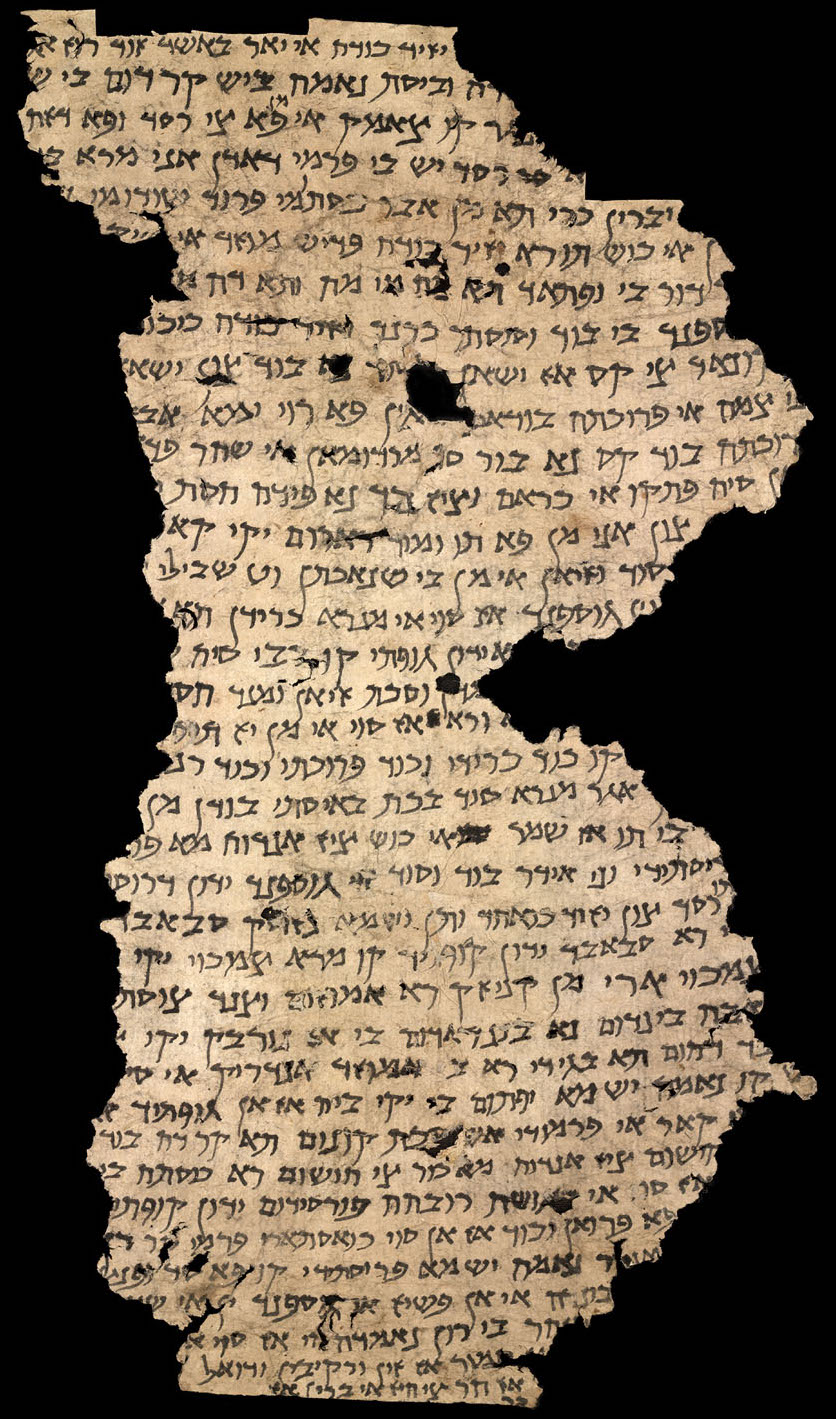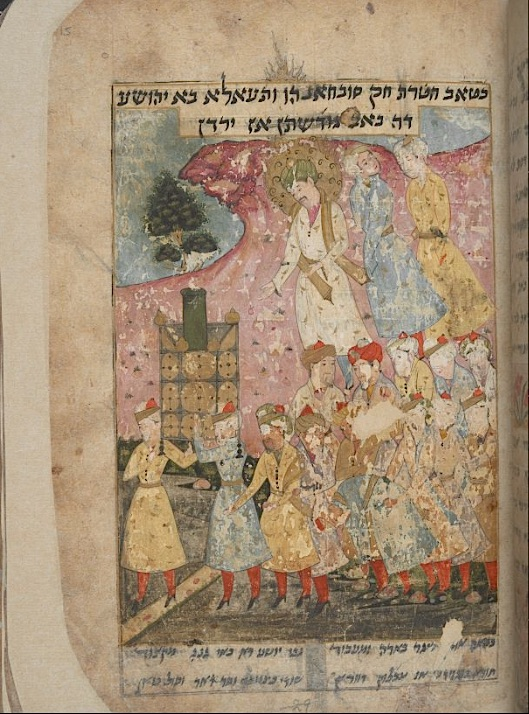Introduction to Early Judeo-Persian: Jewish Letters from Xinjiang to Cairo
April 28 - May 9
2025
Instructor: Ruben S. Nikoghosyan
Languages: English, Persian
Duration: 2 weeks, 10 days (20 hours)
Frequency: 5 classes per week (Monday-Friday)
Duration of each Class: 2 hours (starting 6 pm Yerevan time)
Participation Fee: 290 USD
Deadline for Applications: April 20th
Location: Online (Zoom)
Required level of Persian: Intermediate
Registration: To apply, please click the “Apply” button above. Complete all required fields and submit. Accepted applicants will receive further instructions on participation.
Note: All materials will be provided by the instructor

Judeo-Persian refers to the unique form of Persian that was spoken and written by Iranian Jews over the past millennium.
Starting in the last centuries of the first millennium CE, members of the Persian-speaking Jewish communities (in Iran and Central Asia) began writing their letters, documents, and religious and literary texts in Hebrew script — a tradition that preserved a rich trove of texts we still have today.
These Judeo-Persian texts offer invaluable insights for studying both the evolution of Persian and the history of Jewish communities in Iran and beyond.
They include a wide variety of writings, from exegetical works (known as tafsīr), poetry, and religious/historical epics (composed from the 14th century onward), to legal documents and letters that detail daily life.
Linguistically, the attested Judeo-Persian texts are categorized into two main periods:
- Early Judeo-Persian (EJP) – from around 800 CE to the 13th century (pre-Mongol era).
- Late Judeo-Persian (JP) – from the 13th century to the early 20th century.
Late Judeo-Persian closely resembles standard Classical Persian, written in Arabic script, while Early Judeo-Persian represents a much earlier stage of Persian — likely predating the adoption of the Arabic script. This early form is rich in dialectal variations and archaisms, providing us with a rare glimpse into the Persian language’s evolution.
Exploring Early Judeo-Persian will give participants a deeper understanding of New Persian’s historical development and open doors to linguistically and historically valuable texts.

Course Description
This 2-week intensive introductory course offers a foundation in Early Judeo-Persian (EJP), an early variety of New Persian crucial for understanding the evolution of New Persian. Notably, the earliest datable New Persian documents — two letter pages from the late 8th century CE found at Dandan-Uiliq in northeast Xinjiang, were written in Early Judeo-Persian.
The course is structured in a way, as to help the participants simultaneously to learn the language and its grammatical subtleties, as well as learning and practicing the Hebrew script used for writing the Judeo-Persian texts.
The course consists of 10 classes of intensive study, with two-hour sessions held from Monday to Friday during the two weeks. Below is a breakdown of the main activities during each class:
- Discussion of questions: Reviewing the homework (20 minutes)
- Reading and analysis: Close reading of selected texts with paleographical and philoloical commentary (40 minutes)
- Break: Short pause to refresh (10 minutes)
- Reading and analysis (40 minutes)
- Q&A and wrap-up: Open discussion and addressing participants’ questions (10 minutes)
Students are encouraged to actively participate and share their perspectives, creating a collaborative learning environment.
By taking this course, participants will:
- Learn to read EJP script and its orthographic conventions,
- Study key EJP documents, including the original Dandan-Uiliq letters,
- Explore the broader corpus of EJP and Judeo-Persian texts,
- Engage with essential scholarly literature on EJP, and
- Gain insights into the history and dialectology of Early New Persian.
Selected Texts for the Course
This course features key Early Judeo-Persian documents from significant collections in Dandan-Uiliq, located in what is now Xinjiang Uygur Autonomous Region, PRC, and the Cairo Genizah, Egypt. The selected texts include commercial letters, legal documents, and a religious argument, providing insights into the linguistic condition of Early New Persian (ENP) as spoken by Jewish communities outside Khorasan, representing the Southern variety of ENP.
Document List:
- Du1 – Dandan Uiliq Letter 1, ca. 800 (Utas 1969)
- Du2 – Dandan Uiliq Letter 2, ca. 800 (Zhang and Guang 2008)
- L3 – EJP Letter from Cairo Genizah, 10th/11th century (Paul 2021)
- Ar – Early Judeo-Persian Argument, 11th/12th century (MacKenzie 1968)
- Lr – Law report from Ahwaz, dated 1021 (Asmussen 1965)
Participants will also examine additional notable texts, offering a foundation for further research and a broader understanding of EJP’s development.
Methodology
In this course, I employ a straightforward yet highly effective methodology that integrates literary, historical-linguistic, and philological approaches. This combination is designed to clarify even the most challenging passages and words within the texts we will explore.
A key principle I rely on in my classes is the comparative method. To enhance our understanding of each text, I will draw comparisons across different stages and layers of Persian, including Old and Middle Persian, Manichaean, as well as Classical and Modern Persian, along with various Iranian dialects. These comparisons deepen our examination of the literary contexts surrounding the texts, illuminating the meanings of the words, expressions, and ideas within each text.
This methodology emphasizes the grammatical logic and linguistic structure of each one of the texts we will discuss. As a result, participants will not only understand the contents of the Jewish letters from Dandan Uiliq to the Cairo Genizah covered during the course but will also acquire the essential tools to read and interpret other Early Judeo-Persian texts independently.


